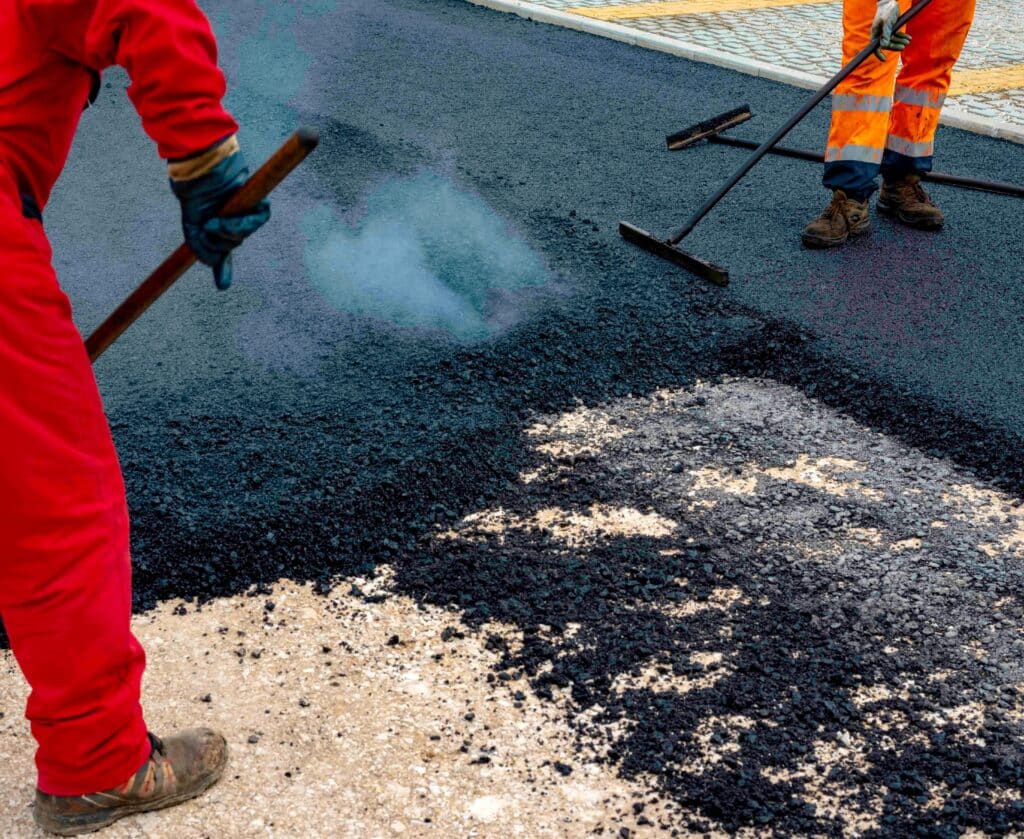Experience the Difference: Hot Mix Asphalt Paving for Regrading Projects
Experience the Difference: Hot Mix Asphalt Paving for Regrading Projects
Blog Article
Unlocking the Secrets of Warm Mix Asphalt Technology
Checking out the midsts of hot mix asphalt modern technology uncovers a globe where meticulous processes and specific solutions assemble to form our roads and infrastructure. The fusion of aggregates, fillers, and binders isn't just a building task however a critical orchestration of sturdiness and effectiveness. As we peer right into the detailed dancing of components, a tapestry of resilience and sustainability unfolds. However what exists beneath this surface area of asphaltic mastery, and what secrets wait to be unveiled in the world of paving innovations?
Significance of Hot Mix Asphalt
Hot Mix Asphalt plays an important duty in modern infrastructure growth due to its longevity and cost-effectiveness. As the most frequently used paving product for roadways, highways, and parking lots, Warm Mix Asphalt offers a variety of advantages that add to its importance in building and construction jobs.
The sturdiness of Hot Mix Asphalt comes from its composition, that includes aggregates, binder, and filler products that are thoroughly picked and mixed to fulfill certain efficiency requirements. This exact combination leads to a strong and versatile pavement that can endure regular use without considerable wear and tear. Additionally, Warm Mix Asphalt is 100% recyclable, more improving its sustainability and ecological advantages. On the whole, the relevance of Warm Mix Asphalt in facilities advancement can not be understated, as it remains to be a keystone of modern-day building practices.
Parts of Asphalt Mixes
The make-up of asphalt blends contains very carefully selected aggregates, binder, and filler products that are important for accomplishing certain efficiency demands. Aggregates are the key component of asphalt blends, providing toughness and security. These aggregates can be natural, such as crushed rock or smashed stone, or artificial, like recycled products from old sidewalks. The binder, normally asphalt or asphalt concrete, holds the aggregates together and supplies flexibility and longevity to the mix. The choice of the binder is vital as it directly affects the mix's efficiency in various weather. Fillers, such as hydrated lime or Portland cement, are used to improve the mix's workability and aging resistance. Angled Parking.
The mix and percentage of these parts play a significant role in establishing the top quality and performance of the asphalt mix. Engineers meticulously create the mix to satisfy particular demands, thinking about aspects like website traffic volume, climate problems, and pavement lifespan. Appropriate option and balancing of aggregates, binder, and fillers are vital for developing durable, long-lasting asphalt sidewalks.
Mixing and Production Methods

As soon as the accumulations are picked, the binder, usually asphalt concrete, is contributed to bind the products with each other. The binder's high quality and quantity dramatically influence the mix's resistance, adaptability, and toughness to ecological variables. Furthermore, fillers like content hydrated lime or Portland concrete might be integrated to enhance specific features of the asphalt mix, such as its workability or wetness resistance.
Throughout production, the aggregates and binder are warmed, commonly in between 250-325 ° F(121-163 ° C ), to help with mixing and make certain appropriate finishing of the aggregates. The blending process should be comprehensive to achieve an uniform mix that advertises the preferred performance features of the asphalt. Different techniques, such as set mixing or drum blending, are utilized to achieve top quality and regular asphalt mixes for building and construction jobs.
Factors Influencing Asphalt Performance
Aspects affecting asphalt efficiency encompass a variety of variables that affect the longevity, longevity, and general high quality of asphalt pavements. One essential aspect is the top quality of products used in the asphalt mix.

Ecological conditions likewise affect asphalt performance. Temperature level variants, moisture seepage, and website traffic tons can all influence the structural integrity of the sidewalk. Design considerations, such as sidewalk density and drainage, are necessary in ensuring the long-lasting efficiency of the asphalt sidewalk. By carefully thinking about these service providers, factors and engineers can optimize asphalt performance and improve the life span of pavements.
Sustainable Practices in Asphalt Technology

In addition, the advancement of warm-mix asphalt (WMA) innovations has obtained traction in recent times. WMA permits for the manufacturing and placement of asphalt blends at lower temperatures contrasted to standard hot-mix asphalt, resulting in reduced power consumption and greenhouse gas exhausts. The use of permeable asphalt mixes can aid mitigate stormwater drainage issues by enabling water to infiltrate with the sidewalk and into the ground, advertising natural water purification and recharge procedures. By implementing these lasting techniques, the asphalt market can add to building an extra durable and eco friendly facilities network.
Final Thought
To conclude, hot mix asphalt technology plays an important function in contemporary framework growth due to its resilience and cost-effectiveness. By very carefully stabilizing elements, utilizing appropriate mixing techniques, and considering various factors, designers can develop high-grade asphalt blends that hold up against rush hour browse around here tons and severe climate condition. Welcoming lasting methods, such as using recycled materials and warm-mix modern technologies, even more enhances the ecological friendliness of asphalt technology.
Mixing and production methods in hot mix asphalt modern technology entail the precise combination and processing of accumulations, binder, and fillers to develop a sturdy and high-performance asphalt mix.Aspects influencing asphalt efficiency include a range of variables that affect the sturdiness, longevity, and total high quality of asphalt sidewalks. Sustainable techniques in asphalt innovation encompass different initiatives intended at reducing the ecological effect of asphalt manufacturing and paving processes. By including recovered asphalt sidewalk (RAP) and recycled asphalt shingles (RAS) right into new asphalt blends, the sector can substantially reduce the usage of raw materials and energy, while additionally decreasing garbage dump waste.
WMA allows for the production and positioning of asphalt mixes at lower temperature levels compared to standard hot-mix asphalt, resulting in reduced energy usage and greenhouse gas exhausts.
Report this page